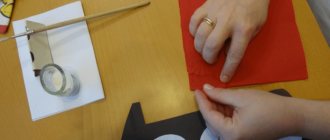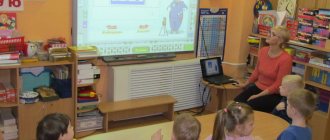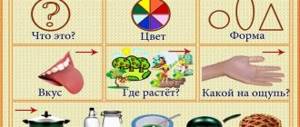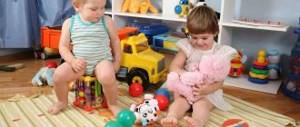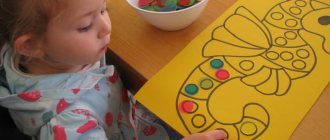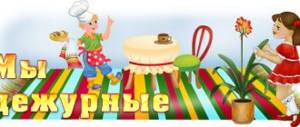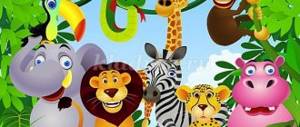Why do I call my method easy and even surprisingly easy? Yes, simply because I have not yet come across a simpler and more reliable way of teaching kids to count. You will soon see this for yourself if you use it to educate your child. For a child, this will be just a game, and all that is required from parents is to devote a few minutes a day to this game, and if you follow my recommendations, sooner or later your child will definitely start counting in a race with you. But is this possible if the child is only three or four years old? It turns out that it is quite possible. In any case, I have been doing this successfully for over ten years.
I outline the entire learning process further in great detail, with a detailed description of each educational game, so that any mother can repeat it with her child. And, in addition, on the Internet on my website “Seven Steps to a Book,” I posted video recordings of fragments of my classes with children to make these lessons even more accessible for playback.
First, a few introductory words.
The first question that some parents have is: is it worth starting to teach your child arithmetic before school?
I believe that a child should be taught when he shows interest in the subject of study, and not after this interest has faded away. And children show interest in counting and counting early; it only needs to be slightly nourished and the games imperceptibly made more complex day by day. If for some reason your child is indifferent to counting objects, do not say to yourself: “He has no inclination for mathematics, I was also behind in mathematics at school.” Try to awaken this interest in him. Just include in his educational games what you have missed so far: counting toys, buttons on a shirt, steps when walking, etc.
The second question: what is the best way to teach a child?
You will get the answer to this question by reading here a complete description of my method of teaching mental arithmetic.
How to properly teach your child to add and subtract
In the meantime, I want to warn you against using some teaching methods that do not benefit the child.
Do not teach your child to add and subtract by one:
“To add 3 to 2, you must first add 1 to 2, you get 3, then add another 1 to 3, you get 4, and finally add another 1 to 4, the result is 5.” ; “- To subtract 3 from 5, you must first subtract 1, leaving 4, then subtract 1 more from 4, leaving 3, and finally subtract 1 more from 3, resulting in 2.”
This unfortunately common method develops and reinforces the habit of slow counting and does not stimulate the child’s mental development. After all, counting means adding and subtracting in whole numerical groups at once, and not adding and subtracting one by one, and even by counting fingers or sticks. Why is this method, which is not useful for a child, so widespread? I think because it’s easier for the teacher. I hope that some teachers, having become familiar with my methodology, will abandon it.
Don't start teaching your child to count with sticks or fingers and make sure that he doesn't start using them later on the advice of an older sister or brother. It's easy to learn to count on your fingers, but difficult to unlearn. While the child is counting on his fingers, the memory mechanism is not involved; the results of addition and subtraction in whole number groups are not stored in memory.
And finally, under no circumstances use the “ruler” method of counting that has appeared in recent years:
“To add 3 to 2, you need to take a ruler, find the number 2 on it, count from it to the right 3 times in centimeters and read the result 5 on the ruler”;
“To subtract 3 from 5, you need to take a ruler, find the number 5 on it, count from it to the left 3 times in centimeters and read the result 2 on the ruler.”
This method of counting, using such a primitive “calculator” as a ruler, seems to have been deliberately invented in order to wean a child from thinking and remembering. Instead of teaching how to count like this, it’s better not to teach at all, but to immediately show how to use a calculator. After all, this method, just like a calculator, eliminates memory training and inhibits the child’s mental development.
Features of an open lesson in mathematics in the middle group of preschool educational institutions
An open lesson is not a new, but a well-proven form of organizing the educational process. Typically, it covers several of the topics covered.
Public lesson
Important! The teacher’s task is to ensure that the child actively participates in the work and demonstrates the level of his knowledge and skills.
Making a model according to traffic rules in kindergarten with your own hands
When developing a detailed plan for an open mathematical lesson in the middle group, the teacher should take into account the following:
- The lesson will be considered as an example of solving current problems in the field of child psychology. Lesson planning should take into account the possibility of demonstrating talents or an original approach. People come here to learn from experience;
- There is an atmosphere of harmony and success in the lesson. Children are praised and given the opportunity to make mistakes. The strengths of students are revealed;
- For participants, such a presentation of their merits serves as an additional incentive for development. From birth, children love play and attention from adults.
Where to start learning to count
At the first stage of learning mental arithmetic, it is necessary to teach the child to count within ten. We need to help him firmly remember the results of all variants of adding and subtracting numbers within ten, just as we adults remember them.
At the second stage of education, preschoolers master the basic methods of adding and subtracting two-digit numbers in their heads. The main thing now is not the automatic retrieval of ready-made solutions from memory, but the understanding and memorization of addition and subtraction methods in subsequent tens.
Both at the first and second stages, learning mental arithmetic occurs using elements of play and competition. With the help of educational games built in a certain sequence, not formal memorization is achieved, but conscious memorization using the child’s visual and tactile memory, followed by consolidation in memory of each learned step.
Why do I teach mental arithmetic? Because only mental arithmetic develops the child’s memory, intelligence and what we call ingenuity. And this is exactly what he will need in his subsequent adult life. And writing “examples” with long thinking and calculating the answer on the fingers of a preschooler does nothing but harm, because discourages you from thinking quickly. He will solve examples later, at school, practicing the accuracy of the design. And intelligence must be developed at an early age, which is facilitated by mental calculation.
Even before starting to teach a child addition and subtraction, parents should teach him to count objects in pictures and in reality, count steps on a ladder, steps while walking. By the beginning of learning mental counting, a child should be able to count at least five toys, fish, birds, or ladybugs and at the same time master the concepts of “more” and “less.” But all these various objects and creatures should not be used in the future for teaching addition and subtraction. Learning mental arithmetic should begin with addition and subtraction of the same homogeneous objects, forming a certain configuration for each number. This will allow the child to use the visual and tactile memory when memorizing the results of addition and subtraction in whole number groups (see video file 056). As a tool for teaching mental counting, I used a set of small counting cubes in a counting box (detailed description below). And children will return to fish, birds, dolls, ladybugs and other objects and creatures later, when solving arithmetic problems. But by this time, adding and subtracting any numbers in the mind will no longer be difficult for them.
For ease of presentation, I divided the first stage of training (counting within the first ten) into 40 lessons, and the second stage of training (counting within the next tens) into another 10-15 lessons. Don't be intimidated by the large number of lessons. The breakdown of the entire training course into lessons is approximate; with prepared children, I sometimes go through 2-3 lessons in one lesson, and it is quite possible that your child will not need so many lessons. In addition, these classes can be called lessons only conditionally, because each lasts only 10-20 minutes. They can also be combined with reading lessons. It is advisable to study twice a week, and it is enough to spend 5-7 minutes on homework on other days. Not every child needs the very first lesson; it is designed only for children who do not yet know the number 1 and, looking at two objects, cannot say how many there are without first counting with their finger. Their training must begin practically “from scratch.” More prepared children can start immediately from the second, and some - from the third or fourth lesson.
I conduct classes with three children at a time, no more, in order to keep the attention of each of them and not let them get bored. When the level of preparation of children is slightly different, you have to work with them on different tasks one by one, all the time switching from one child to another. At the initial lessons, the presence of parents is desirable so that they understand the essence of the methodology and correctly perform simple and short daily homework with their children. But the parents must be placed so that the children forget about their presence. Parents should not interfere or discipline their children, even if they are naughty or distracted.
Classes with children in mental counting in a small group can begin from approximately the age of three, if they already know how to count objects with their fingers, at least up to five. And with their own child, parents can easily start elementary lessons using this method from the age of two.
Advertising
Progress of the lesson in the middle group
In the lesson project, the teacher sets goals and helps to find the right solutions. The formation of mathematical concepts in children occurs both in the classroom and at home.
Lessons (GCD) remain the main form of development of basic mathematical canons in a preschool institution. Their main role is to solve problems of the child’s mathematical and mental development and prepare for school.
Children solve problems
Important! Classes are built on the principle of close connection with life, scientific validity, clarity, individual approach, etc.
Drawing a portrait of a mother in older groups of preschool educational institutions step by step
Children study together. The number of lessons varies depending on the program of the child care institution. Maximum twice a week (25-30 min.). These activities require tension. They are recommended to be carried out somewhere in the middle of the week, preferably in the morning. It is useful to combine with physical education, music or drawing. In winter and summer, it is better to dilute the load with walks in the fresh air. Physical exercise consists of bending and jumping. To relieve tension.
Each lesson is strictly thought out. All tasks contribute to the development of children's mathematical skills and logic and allow all students to fully master all the material.
New material is supplied in parts. A big goal is broken down into small steps. They consolidate what they have learned through repetition in several lessons in a row. For example:
- First, children become familiar with width. Two objects of clearly different widths are taken. Better in different colors (not the widest);
- children, applying objects to each other, see the difference;
- then the widest strip is removed. Children understand that the previous one has already happened;
- a narrow strip is removed. All the strips are placed side by side to make it easier for children to compare.
Classes quickly develop children's visual skills. Over time, they will instantly diagnose what they see and learn to sort objects from the narrowest to the widest and vice versa.
Note! Gradually the sorting process becomes more complicated. Each new success gives children confidence in their knowledge and motivates them to develop further. The learning process can be no less interesting than leisure time.
Each new knowledge is repeated the next day. Then, throughout the year, the teacher returns to the material covered several times. This reveals the quality of the fixed material.
All topics have different degrees of difficulty in mastering. Quarterly, the material is distributed evenly so that students can learn new topics.
Mathematical development lessons pursue not only the goal of teaching mathematics, but also the formation of literate speech using special terms, and the development of the child’s character.
For your information! Mathematics classes are closed during the summer. Lessons are replaced by games and walks outdoors.
The lesson outline depends on the complexity of the topic. This can be either one part or several. All of them are independent and equal in importance, but are connected by a common theme.
Lesson structure:
- setting and implementing tasks on various topics;
- lesson for the whole group, including individual ones;
- use of auxiliary materials, methods;
- consolidation of new material;
- repeating what has been done.
It is recommended to devote the beginning of the lesson to new material. The end of the lesson is carried out in the form of a didactic game. This helps consolidate knowledge. In the middle of the lesson, short physical exercises are conducted to restore attention.
How to teach your child to count within five
To conduct initial lessons, you will need five cards with the numbers 1, 2, 3, 4, 5 and five cubes with an edge size of approximately 1.5-2 cm, installed in a box. For cubes, I use “knowledge cubes” or “learning bricks” sold in educational game stores, 36 cubes per box. For the entire training course you will need three such boxes, i.e. 108 cubes. For initial lessons I take five cubes, the rest will be needed later. If you are unable to find ready-made cubes, it will not be difficult to make them yourself. To do this, you just need to print out a drawing on thick paper, 200-250 g/m2, and then cut out cube blanks from it, glue them together in accordance with the instructions, fill them with any filler, for example, some kind of cereal, and cover the outside with tape. It is also necessary to make a box to place these five cubes in a row. Gluing it together is just as easy from a pattern printed on thick paper and cut out. At the bottom of the box, five cells are drawn according to the size of the cubes; the cubes should fit in it freely.
You have already understood that learning to count at the initial stage will be done with the help of five cubes and a box with five cells for them. In this regard, the question arises: why is the method of learning with the help of five counting cubes and a box with five cells better than learning with the help of five fingers? Mainly because the teacher can cover the box with his palm from time to time or remove it, due to which the cubes and empty cells located in it are very quickly imprinted in the child’s memory. But the child’s fingers always remain with him, he can see or feel them, and there is simply no need for memorization; the memory mechanism is not stimulated.
You should also not try to replace the box of cubes with counting sticks, other counting objects, or cubes that are not lined up in the box. Unlike cubes lined up in a box, these objects are arranged randomly, do not form a permanent configuration and therefore are not stored in memory as a memorable picture.
